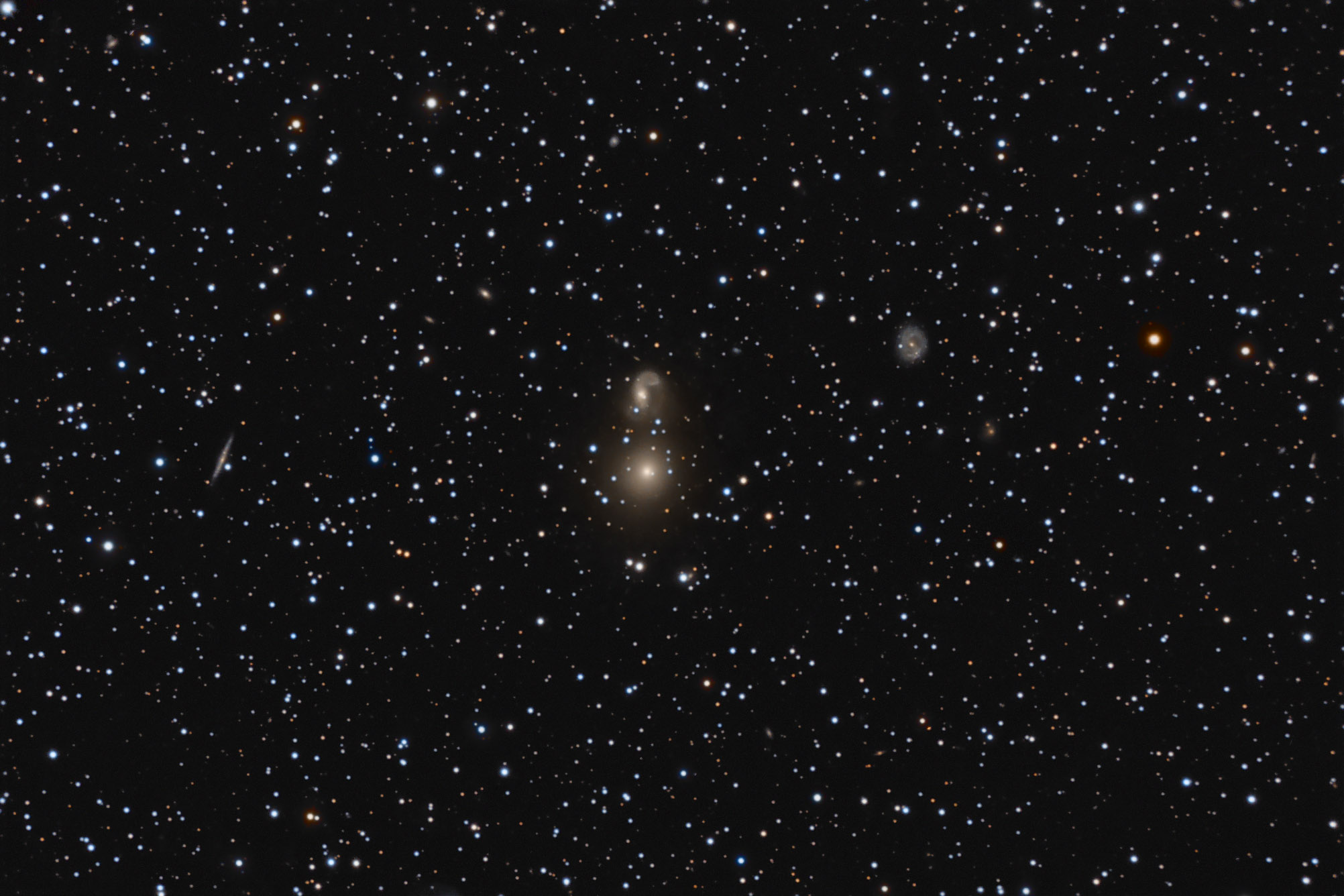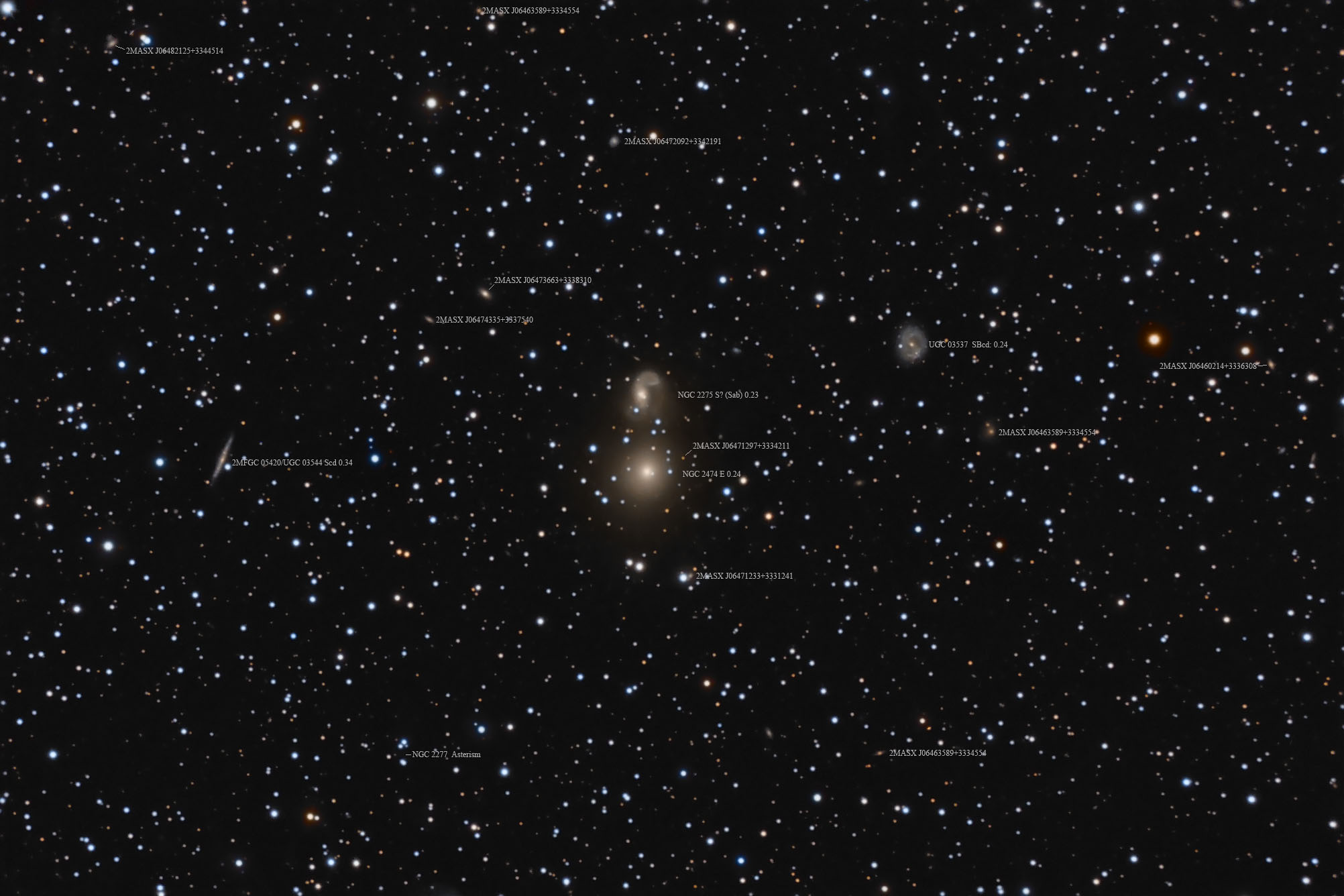| Description | Images |
Object name: KPG118Designation(s): KPG118, NGC2274, NGC2275, NGC2277, KPG 118 is a pair of galaxies, NGC 2274 and NGC 2275. A note at NED says of this pair "The ASC and NED agree assigning type E to this galaxy (NGC 2274). According to Karachentseva (1973) this object, together with NGC 2275, is a member of an isolated pair of galaxies (KPG 118)." Problem is there's a third galaxy at the same redshift a bit to the west, UGC 3537, making it a triple system cataloged as WBL 121 and to really complicate things NED lists the galaxy group LDCE 0468 at virtually the same redshift and shows it as containing 12 galaxies. I have no idea which those 12 are. Only 4 with similar redshift is shown in my image, one of these has a higher redshift but may be related. In fact, none of the other galaxies in the image have a redshift listed at NED. Most aren't listed at all. Those that are without redshift are all from the 2MASS catalog of IR sources. I've labeled them in the annotated image. In any case, I don't understand calling KPG 118 an "isolated pair." Related Designation(s):2MASS J06471736+3334015, 2MASS J06471792+3335574, 2MASX J06471737+3334021, 2MASX J06471794+3335571, 2MASXi J0647173+333401, 2MASXi J0647179+333557, CGCG 0644.0+3338, CGCG 0644.0+3340, CGCG 175-015, CGCG 175-016, HDCE 0416 NED001, HDCE 0416 NED002, KPG 118, KPG 118A, KPG 118B, KPG118, LDCE 0468 NED006, LDCE 0468 NED007, LGG 139:[G93] 001, LGG 139:[G93] 002, MCG +06-15-007, MCG +06-15-008, NGC 2274, NGC 2275, NGC 2277, NGC2274, NGC2275, NGC2277, PGC 019603, PGC 019605, UGC 03541, UGC 03542, UZC J064717.5+333401, UZC J064717.9+333556, UZC-CG 048 NED02, UZC-CG 048 NED03, WBL 121-002, WBL 121-003, | Permanent link: https://images.mantrapskies.com/catalog/OTHER/KPG118-NGC2274-NGC2275-NGC2277/NGC2274L8X10RGB2X10.JPG |


